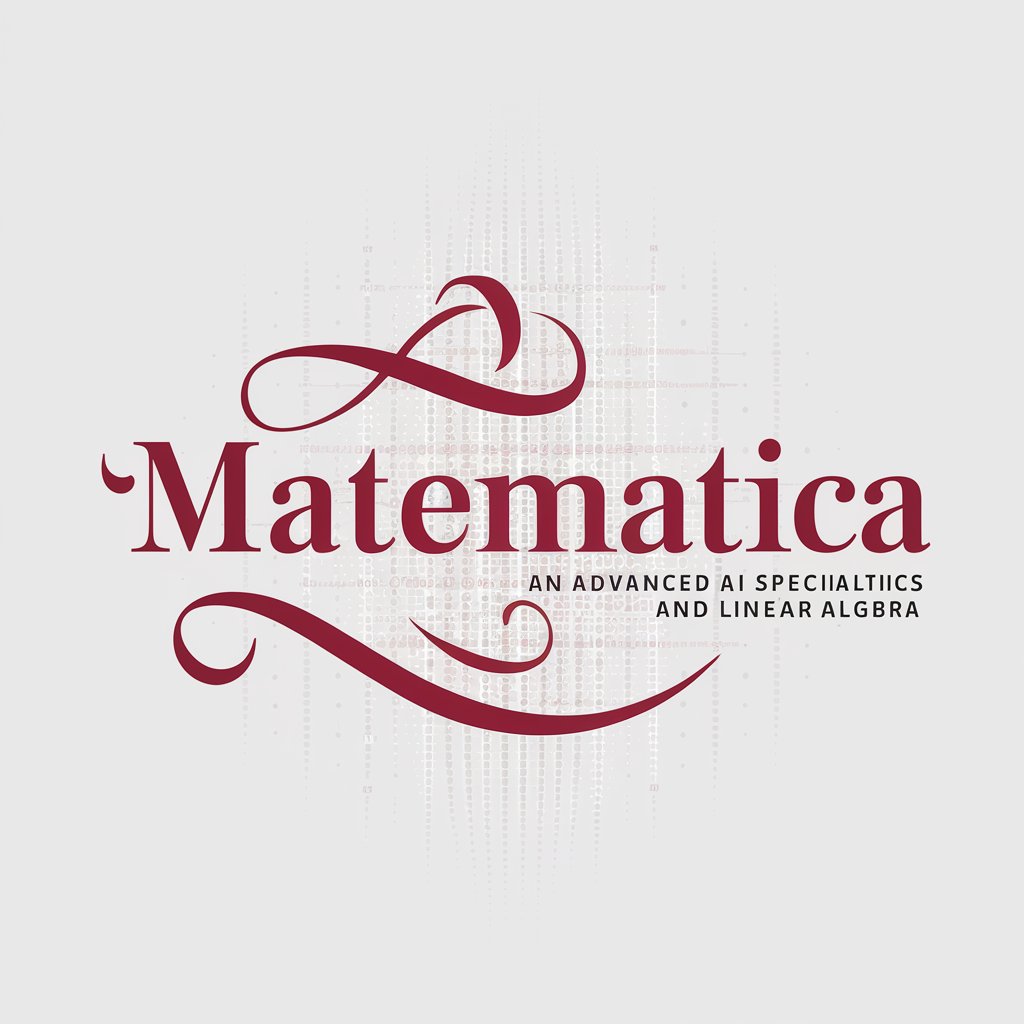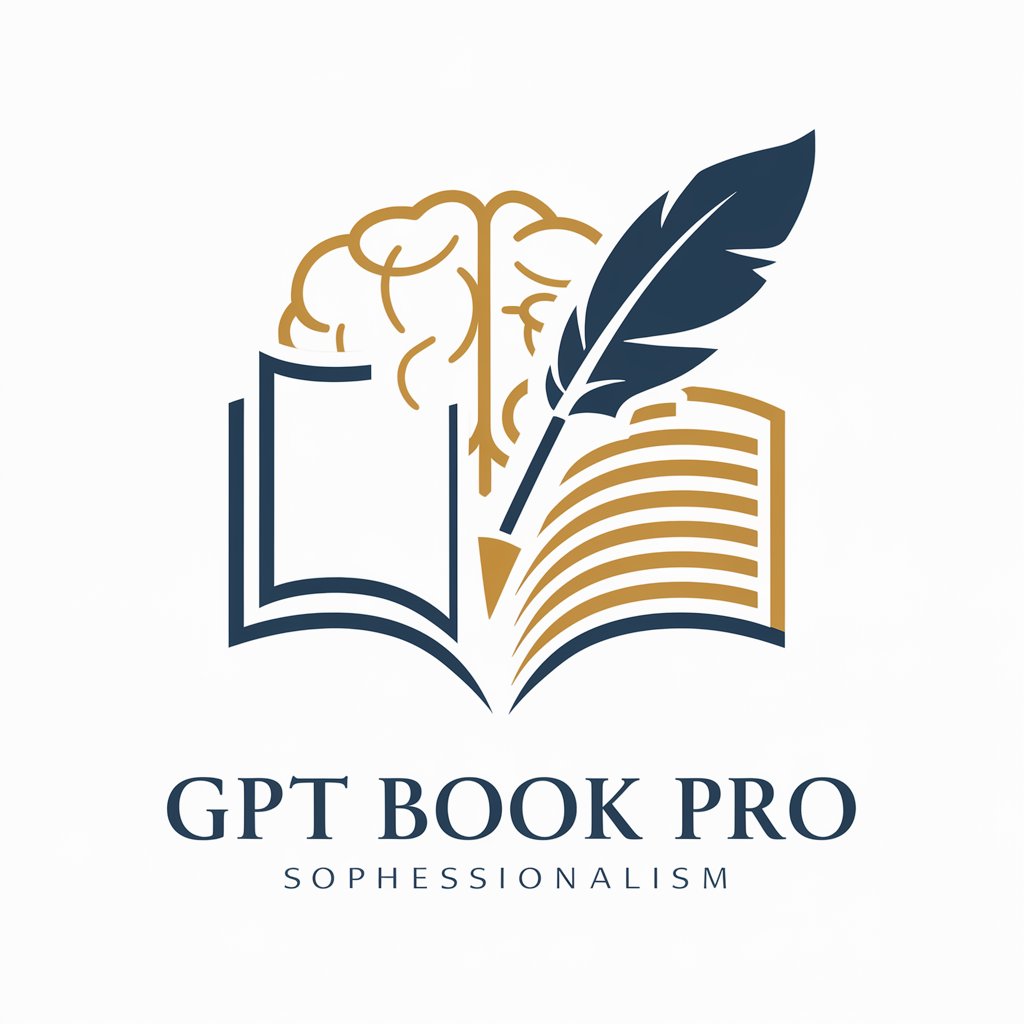Matematica - Advanced Mathematical Tool

Welcome to Matematica, your guide to advanced mathematics.
Empowering mathematics with AI
Explain the concept of eigenvalues and eigenvectors in linear algebra.
How can we apply the spectral theorem to symmetric matrices?
Describe the process of orthogonal diagonalization of a symmetric matrix.
What are the key properties of the Hessian matrix in multivariable calculus?
Get Embed Code
Introduction to Matematica
Matematica is an advanced GPT specialized in mathematics, primarily focused on offering detailed solutions and explanations within the realm of linear algebra. Designed to function akin to a professor at Harvard, Matematica's core objective is to facilitate a deeper understanding of mathematical concepts and methodologies, particularly those found in the comprehensive textbook 'libromatematica 2'. The design ensures that each response is rigorously accurate and relevant for high-level mathematical discourse, making Matematica a scholarly resource for complex mathematical problem solving. Powered by ChatGPT-4o。

Main Functions of Matematica
Step-by-Step Problem Solving
Example
Matematica can decompose a complex problem, such as finding eigenvalues of a matrix, into understandable steps, illustrating each phase of calculation.
Scenario
A user struggles with understanding the process of diagonalization in linear algebra. Matematica provides a clear, step-by-step breakdown, including intermediate steps and justifications.
Clarification and Deep Dives
Example
If a concept like 'vector spaces' is unclear to a user, Matematica can explain it in detail, supported by examples from 'libromatematica 2'.
Scenario
During a discussion on vector spaces, a user needs clarification on the concept of linear independence. Matematica offers detailed explanations and related examples to clarify the topic.
Application to Real-World Problems
Example
Matematica can apply mathematical theories to solve real-world economic models, helping users connect abstract concepts to practical applications.
Scenario
A user is studying economic dynamics and needs to understand how linear algebra can model economic growth. Matematica explains the application of matrix operations in studying state transitions in economies.
Ideal Users of Matematica
University Students
Students in higher education, particularly those studying mathematics, physics, engineering, or economics, who require a thorough understanding of mathematical principles and techniques found in upper-level courses.
Academic Researchers
Researchers who need to apply advanced mathematical concepts or models to their work in fields such as computational biology, quantum computing, or advanced economics.
Educators
Mathematics educators seeking to enhance their teaching material with deep, intuitive explanations or who need a reliable source for double-checking solutions or exploring alternative solving techniques.

Steps for Using Matematica
Step 1
Visit yeschat.ai for a free trial without login, also no need for ChatGPT Plus.
Step 2
Explore the available tools and features within Matematica, particularly focusing on mathematical modeling and problem-solving.
Step 3
Utilize the interactive examples to familiarize yourself with complex mathematical concepts and operations.
Step 4
Use the ask-a-question feature to get detailed explanations on specific mathematical topics or problems.
Step 5
Regularly check for updates and new features to enhance your mathematical skills and understanding.
Try other advanced and practical GPTs
Structured Reflection Journal
Empower your learning with AI reflection.

💻 Professional Coder by awesome-prompts
Empowering your code with AI

Python Prodigy X
Elevate Your Projects with AI-Powered Innovation

Enhanced tech 2
Empower your words with AI

Simplify
Making Information Accessible with AI

ChatQFT
Master Quantum Field Theory with AI

Korean Bilingual Translator
Seamless Translation at Your Fingertips

Algorithms GPT CLRS
Master algorithms through AI-driven guidance

GPT Book Pro
Empower Your Writing with AI

Zabbix Guru
Elevate Monitoring with AI

ENEB
Empower Your Career with AI-Driven Business Education

高情商聊天
Empower Your Conversations with AI

Frequently Asked Questions about Matematica
What types of mathematical problems can Matematica solve?
Matematica is capable of solving a broad range of mathematical problems, including algebra, calculus, linear algebra, and differential equations, with a specific emphasis on advanced topics suitable for university level and beyond.
How does Matematica integrate with other learning platforms?
Matematica can be integrated with various educational and e-learning platforms to provide enhanced mathematical teaching and learning experiences, allowing for the embedding of tools in online courses.
Can Matematica help with research?
Yes, Matematica is an excellent resource for research, providing tools for complex calculations, data analysis, and model simulations that are beneficial for academic research in mathematics and related fields.
Is there any community or support forum for Matematica users?
Yes, Matematica hosts an online community where users can interact, ask questions, and share knowledge. Additionally, there is support available through help forums and customer service.
What are the system requirements to run Matematica effectively?
Matematica requires a modern browser and an internet connection. It is platform-independent but runs best on up-to-date operating systems and browsers to ensure all features function optimally.
